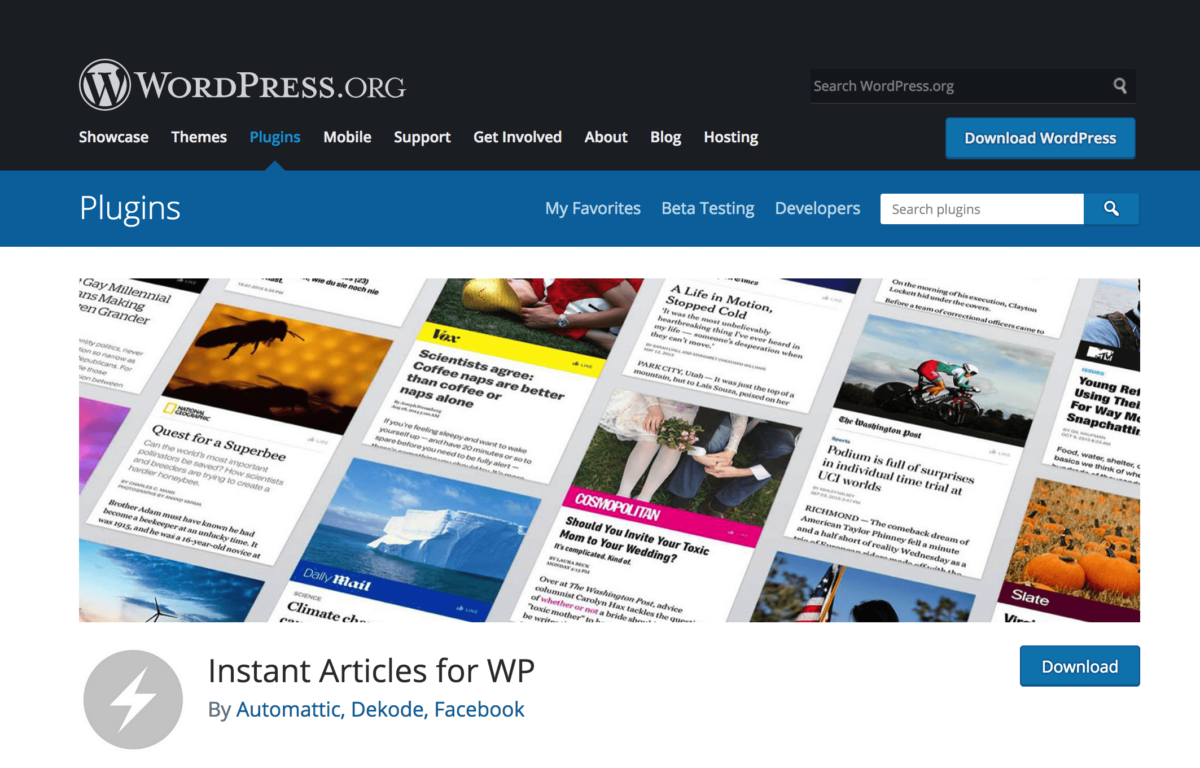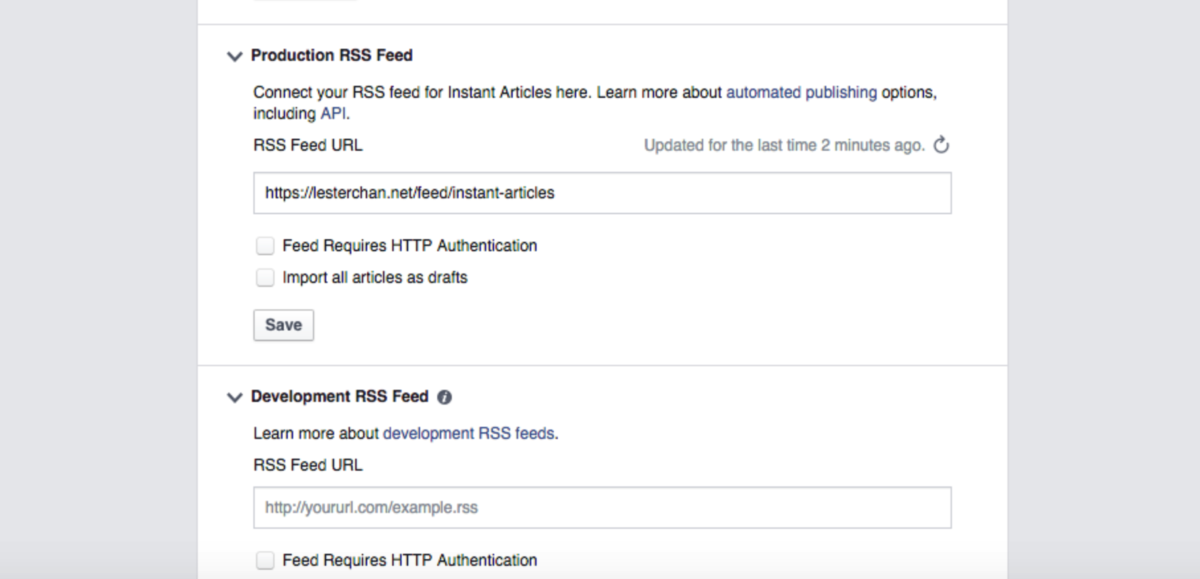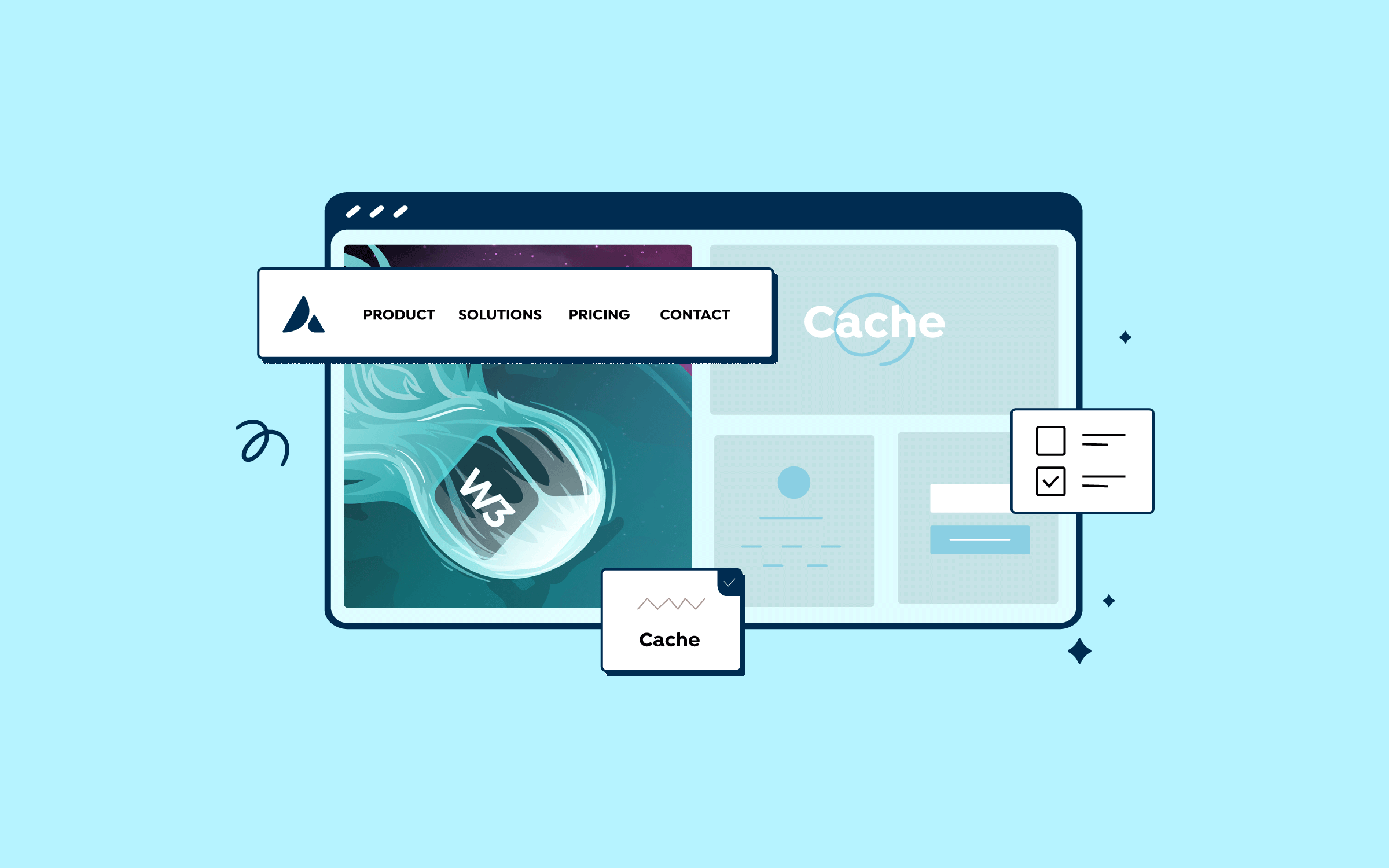Share
It’s been no secret to anyone using a mobile device over the past few years – webpages have become more feature-rich, while delivery speed has been sometimes lacking. While ‘mobile-first’ initiatives have been helpful in bridging this gap, more effort is necessary to bring browsing speeds into the 21st Century.
Fortunately, a number of major developers have looked to tackle the speed issue head on. Both Google and Apple have released projects to improve mobile content delivery speed (Accelerated Mobile Pages and Apple News Publisher respectively). However, one major developer has been so far conspicuous by their absence, despite their overall dominance of our web time.
Instant Articles is Facebook’s own initiative to improve mobile browsing speeds and much like the AMP Plugin for Google’s project, Automattic has stepped up to develop their own plugin for WordPress integration.
In this article, we’ll look at what Instant Articles is, its limitations and how to integrate it with your WordPress website. In our article on integrating AMP with WordPress, we explained some of the technical terms found here, so it’s worth reading through that first, to get up to speed.
If you’re ready, let’s get started!
What Is Facebook’s Instant Articles?
Announced as far back as May 2015, Facebook’s Instant Articles has similar goals to both Google’s and Apple’s offerings, delivering web content quickly to mobile devices. However, while Google’s Accelerated Mobile Pages (AMP) was designed as an ‘open-source’ project (i.e. It enables anyone to assist with development.), Instant Articles is a ‘closed-source’ proprietary platform. As such, content is only viewable on mobile devices within the Facebook app and using Instant Articles means working completely within Facebook’s ecosystem.
Publishing articles happens directly from WordPress through an RSS feed edited with HTML5. Instant Articles are published at the same time as the desktop article and any changes or updates are automatically captured and pushed to your feed.
To actually increase content delivery speed, Instant Articles borrows the same technology used to display images and videos in the Facebook app. This, coupled with the benefits of caching, means articles may load up to ten times faster than normal.
While AMP focuses on speed at the expense of extra functionality, Facebook has given content producers a number of tools to make articles immersive and interactive:
News Feed article previews can be customized to match brand identity and can even include video. Of course, with this being Facebook, user engagement can be tracked through your page’s normal analytics screen.
While all of these features are impressive, you’d be forgiven for thinking that this extra functionality could impact page speeds. As alluded to earlier though (and much like Google itself), Facebook will cache all compatible Instant Articles on their servers, keeping the load time to a minimum.
Finally, there looks to be more good news for content providers, publishers selling adverts through Instant Articles get to keep all revenue generated. For those extending their campaigns outside of Facebook, there’s still the option to take advantage of the Facebook Audience Network, though that appears to follow the same guidelines it always has.
Now we’ve looked at what Instant Articles is, lets look at some of the format’s limitations.
What Are the Limitations of Instant Articles?
While speed and the immersion tools are big benefits, Instant Articles comes with a number of limitations to consider:
1. Eligibility
Websites with less than 50 eligible posts will be rejected outright. If your site does meet this post count, your site joins the queue to be manually reviewed. As with any manual process, wading through the inevitable applications takes time, and it could be that your competitors are taking advantage of Instant Articles before you.
2. Compatibility
Publishers will need multiple solutions to show the same page via the different platforms and those solutions may not be consistent in their implementation, nor play nicely with each other. Furthermore, some of the immersion tools mentioned above will need to be coded into your pages and as far as WordPress is concerned, some plugins may also need more code to be compatible.
3. User Interaction
In an FAQ on their developer website, Facebook stated there will be no News Feed ranking benefit to Instant Articles; and because all interactions (such as reactions, comments, and shares) take place with the Facebook app, overall this could mean your Facebook user engagement rises, but your reach may not – leaving your original website article languishing from a lack of user interaction.
4. Future Decisions
While Facebook’s terms (such as the aforementioned 100% ad revenue) are favorable for publishers right now, if Instant Articles has a large adoption rate, these terms may change. After all, providing a tempting sign-up offer to only lock users into a lesser deal later is not a new business move. To which, Facebook may choose to remove competitor’s ads (such as Google AdSense), replacing them with their own versions and further locking in content providers.
5. Facebook’s ‘Walled Garden’
Finally (if you haven’t guessed by now), most aspects of Instant Articles are handled entirely within the Facebook ecosystem. The relative merits of a ‘walled garden’ approach are beyond the scope of this article, but it may be worth considering if you enjoy the freedom of using non-proprietary solutions.
Now that we’ve discovered what Instant Articles is and looked at some of its limitations, let’s look at the final step: WordPress integration.
How Can I Integrate Instant Articles With My WordPress Website?
To get your WordPress website integrated with Instant Articles, you’ll need at least two things:
While you probably have the first one, it’s the plugin, which is a a joint effort between Automattic and Norwegian developers Dekode, called Instant Articles for WP, that you may not have. Let’s take a look!
Instant Articles for WP
Much like Automattic’s AMP plugin, Instant Articles for WP provides no settings to tweak. All of the magic happens elsewhere. Once installed, a new RSS feed is created, which you can see by appending either /?feed=instant-articles or /feed/instant-articles (depending on your permalink settings) to your website’s URL:
http://www.example.com/?feed=instant-articles
http://www.example.com/feed/instant-articles

For the rest of the process, you’ll need to sign up to Instant Articles – enable your page on the next screen – then log into your Facebook Page, navigate to the Settings screen, and select Instant Articles from the left hand menu. The setup process has a number of steps, but you can skip most of the Initial Setup section if you want to get up and running straight away:

Step 2 involves actually submitting your articles, but this won’t be possible until you’ve connected your RSS feeds. Scroll past Step 2 and find sections to enter your RSS feeds, including a development feed if you have one, then back up to Step 2, where you’ll submit each article for review.

It’s at this point that the review process begins and once accepted, any new articles received from your RSS feed will be pushed to the readers’ devices.
Styling of your Instant Article page takes place within the Facebook Style Editor, such as font color, typography, and identity images; among other options. Facebook has provided a comprehensive design guide to what’s possible when using the Style Editor.
Conclusion
Mobile browsing dominates our time, but the speed at which we receive web content is sometimes left wanting. While Google and Apple have looked to address the issue with initiatives for the open web, content providers for Facebook have had nothing until now.
Instant Articles is the answer to rapid content delivery within the Facebook ecosystem. To get your WordPress website ready, you need to do the following:
Major developers are looking to drag our mobile browsing speeds into the 21st Century, but at this point you may be wondering whether you need both AMP and Instant Articles to deliver an improved experience to mobile readers. For the answers to that question, look out for a future post where we’ll compare both platforms directly.
Are you going to be an adopter of Instant Articles? How will it help your business connect with people? Give us your opinion in the comments section below or let us know if you have questions about using Avada with WordPress!
Image credit: geralt.



















































































































